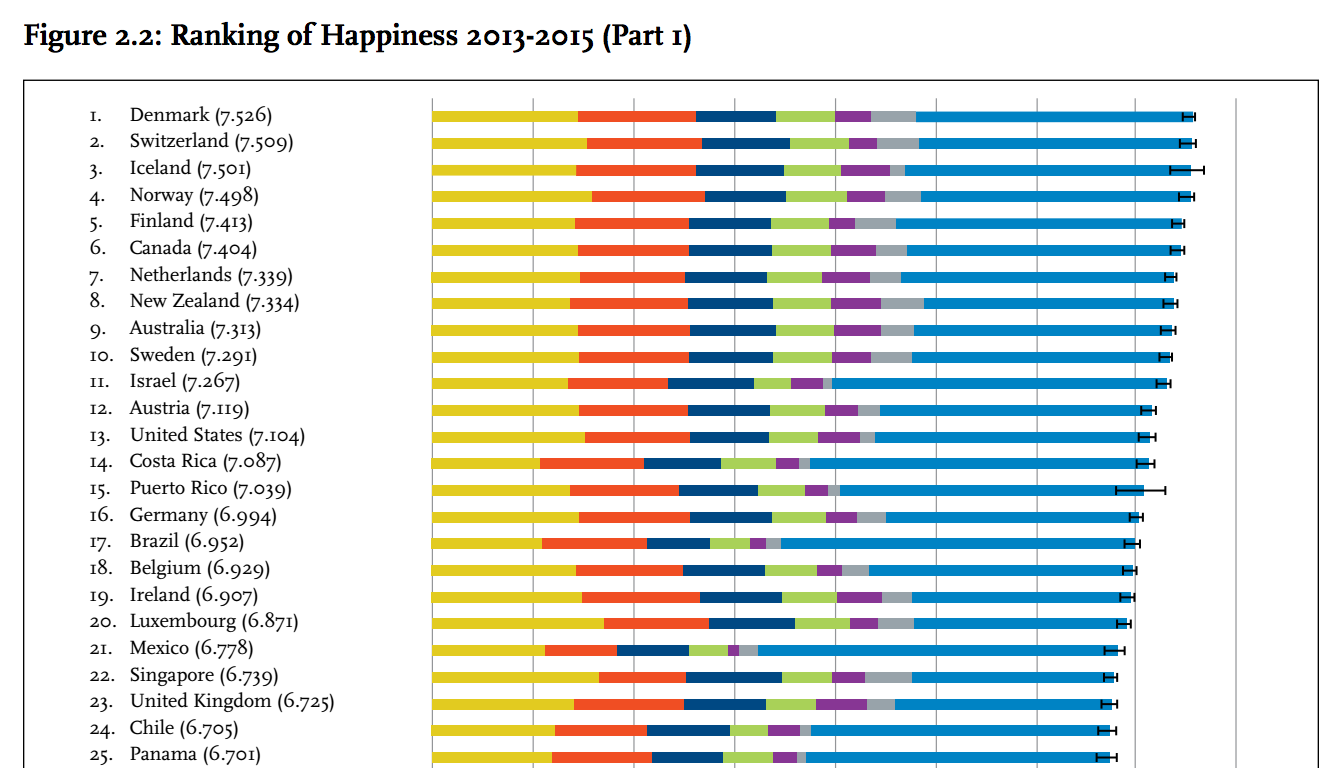Many believe that happiness is the appropriate measure for social progress and that public policy should be dedicated to promoting happiness. According to the 2016 World Happiness Report, the greatest happiness comes when we can inspire and unite people from all backgrounds and cultures. So, who are the happiest people in the world and what are the global trends?
If we want to be among the happiest people in the world, we might want to consider moving to Scandinavia. The Danes rank at the very top of the happiness chart, the Swiss rank 2nd and the Icelanders 3rd. Norway, Finland and Canada rank right behind them. The United States ranks 13th. At the bottom of the pack are Burundi, Syria and Togo.
To promote happiness, it does not appear you need a minister of happiness, since you won’t find one in any of the top-most ranked countries. Bhutan (ranks 84th), Ecuador (ranks 51st), Venezuela (ranks 44th) and the United Arab Emirates (ranks 28th) are the only four countries with ministers of happiness who coordinate national initiatives. (That said, Bhutan places 1st on the equality of happiness scale.) Many more local efforts at the states, county and regional levels are now committed to policies that promote happy lives.
So, how do we promote greater happiness worldwide? How do we foster greater well-being within and among countries? People in countries in which well-being is more equally distributed tend to have higher life evaluations on average. Unfortunately, the report finds a general increase in the inequality of happiness and well-being, with more than half of countries seeing a significant increase and only ten percent seeing a significant decrease.
We also want sustainable development if we are to promote happiness. Societies need to look at economic, social and environmental goals holistically. If a country aims only to promote economic objectives, it can be extremely harmful to human well-being, including leading to income inequality and social inequality and damage to the environment.
Using life evaluations as the key measure to capture the overall quality of life, the authors looked at the distribution of happiness for 1,000 people in more than 150 countries and compared the data. As the authors see it, happiness subsumes income, health status, the quality of life. Among other questions, they asked “Are you satisfied or dissatisfied with your freedom to choose what you do with your life?” and “If you were in trouble, do you have relatives or friends you can count on to help you whenever you need them, or not?”
Here’s more from Just Care:

Leave a Reply